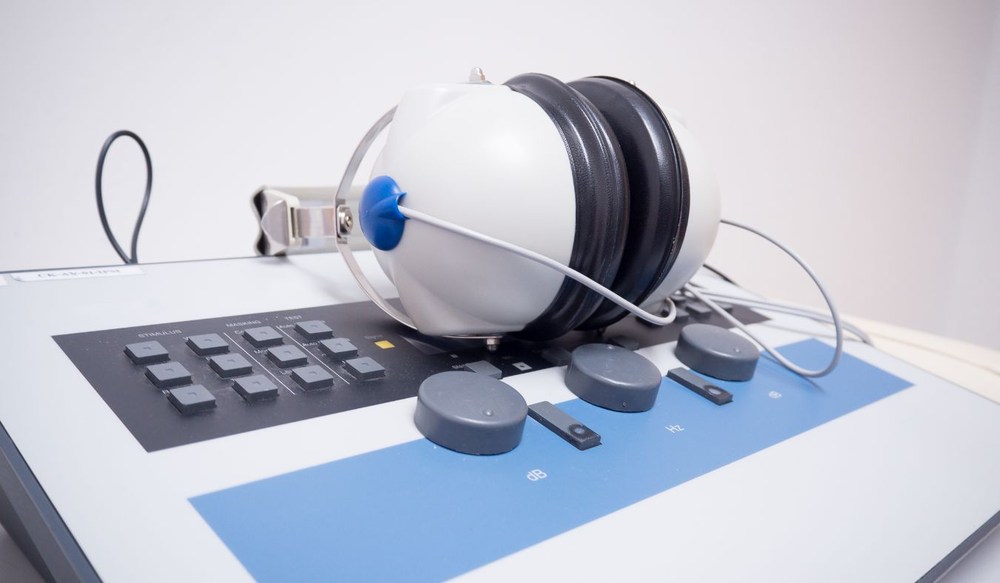Understanding Hearing Test Results: A Guide for Patients
Getting your hearing tested is an important step, but understanding what

By: admin | March 21, 2025
Many people live with hearing loss without seeking help, often dismissing their difficulties as minor inconveniences or believing they can simply “get by.” You might recognize this pattern – straining to follow conversations in noisy restaurants, frequently asking people to repeat themselves or turning up the TV volume while family members complain it’s too loud. These signs can be easy to brush aside, especially when the hearing loss develops slowly over time, making it harder to notice how much you’re actually missing.
What makes this situation even more complicated is that some types of hearing loss don’t show up on standard hearing tests. This “hidden hearing loss” can be particularly frustrating because you might struggle to hear in certain situations despite being told your hearing is “normal.” You might find yourself feeling tired after social gatherings, withdrawing from conversations or wondering why understanding speech is so difficult despite passing a basic hearing test. Comprehensive hearing evaluations are designed to catch these less obvious problems that standard screenings might miss, helping to explain the disconnection between what you experience and what basic tests show.
Hidden hearing loss is a type of auditory difficulty that isn’t detected through traditional hearing tests, which focus on how well you perceive tones in a quiet environment. Instead, this condition affects the brain’s ability to process sound, particularly in complex or noisy settings like restaurants, crowded gatherings or busy streets.
The issue often stems from damage to the synapses that connect the inner ear’s hair cells to the auditory nerve. These synapses play a crucial role in transmitting sound signals to the brain, and when they are disrupted, it becomes harder to distinguish speech from background noise. Even though hearing thresholds may appear normal on a standard test, individuals with hidden hearing loss may experience difficulty following conversations in challenging listening environments.
Hidden hearing loss often develops slowly, which makes early detection difficult. It usually doesn’t happen overnight. Instead, it subtly reduces your ability to hear and understand speech in noisy environments.
The slow progression of hidden hearing loss can make it hard for you and your audiologist to recognize the problem at first. It’s not uncommon for people with this type of hearing loss to show normal results on standard hearing tests, leading them to believe their hearing is fine when it may not be.
It’s important to share any changes in your hearing experiences with your specialist. Even if they seem minor or inconsequential, these changes could be early signs of hidden hearing loss. Early detection can make a significant difference in managing its effects and maintaining good hearing health.
To fully understand hidden hearing loss, we need to know why it often goes undetected. First, the symptoms aren’t always clear. You might hear sounds perfectly fine in a quiet room but struggle with conversations in noisy places. This can lead you to believe that your hearing is normal when there could be an underlying issue.
Several factors contribute to this unnoticed condition: Normal results on standard hearing tests; subtle and gradual onset of symptoms; and often, a lack of awareness about this specific type of hearing loss. These combined factors can make early detection of hidden hearing loss challenging for both you and your audiologist.
Hearing tests are designed to measure your ability to hear different sounds, pitches and frequencies. These comprehensive assessments include a series of subtests that evaluate various aspects of your hearing.
The first part of the test usually involves pure-tone testing. This measures your sensitivity to sounds of varying frequencies and volumes. During this test, you’ll respond whenever you hear a sound through headphones.
Speech testing is another important component. It assesses how well you can understand spoken words at different volumes and in different conditions, like with background noise present. The results from these tests help your audiologist determine if there’s any hearing loss and if so, provide insights into its nature and extent.
These evaluations are integral in diagnosing hidden hearing loss as they can identify issues that may not be apparent in everyday situations or during basic screenings. Understanding how these tests work can help you appreciate their importance in maintaining optimal hearing health.
Diagnosing hidden hearing loss can be challenging because standard hearing tests, such as pure-tone audiometry, often show normal results. This is because traditional tests primarily measure the function of the inner ear (cochlea) and the ability to detect different frequencies of sound, rather than assessing how well the auditory nerve and brain process complex sounds, especially in noisy environments.
To identify hidden hearing loss, specialists may use additional tests that go beyond basic audiograms. One common approach is speech-in-noise testing, which evaluates how well a person can understand speech when background noise is present. This helps detect difficulties with auditory processing that might not appear in a quiet setting. Another test, auditory brainstem response (ABR), measures how the brain processes sound signals. In cases of hidden hearing loss, the cochlea may respond normally, but the neural signals traveling to the brain may be weaker or disrupted, revealing an issue with sound processing rather than sound detection.
Some researchers are also exploring more advanced diagnostic tools, such as electrocochleography (ECochG) and envelope following responses (EFRs), which provide detailed insights into how the auditory system handles sound at a neural level. While these methods are not yet widely used in clinical settings, they represent promising ways to better detect and understand hidden hearing loss. By combining multiple tests and considering a person’s reported difficulties with speech perception, audiologists can build a clearer picture of how this condition affects an individual’s hearing and recommend appropriate management strategies.
Once hidden hearing loss has been identified, you might wonder, “What’s next?” The good news is that detecting this type of hearing loss is a significant step towards managing it effectively. With the right plan in place, you can start taking proactive measures to improve your hearing health. Your hearing health professional will explain your test results in detail and discuss potential strategies for managing your hearing loss.
One common approach involves using assistive listening devices (ALDs). These are specially designed tools that can help enhance sound clarity and reduce background noise – two challenges often faced by those with hidden hearing loss. ALDs range from personal amplifiers to TV listening systems, offering a variety of options tailored to fit different lifestyles and needs.
Auditory training is a form of therapy designed to improve the brain’s ability to process and interpret sound. It involves structured listening exercises that help individuals strengthen their ability to distinguish speech, especially in challenging environments like noisy restaurants or group conversations. This type of training is often used for people with hearing loss, auditory processing disorders or hidden hearing loss, where traditional hearing tests may not fully explain their difficulties. Exercises can include identifying different speech sounds, focusing on voices in background noise or practicing memory and attention skills related to hearing.
Hearing aids can sometimes help with hidden hearing loss, but their effectiveness depends on the individual case. Because traditional hearing aids are designed to amplify sound rather than address the underlying neural processing issues, they may not fully resolve the difficulties associated with distinguishing speech in noisy environments. However, for some people, hearing aids with advanced noise reduction and directional microphone features can improve clarity in challenging listening situations.
Living with hidden hearing loss can be frustrating, especially in situations with background noise or overlapping conversations. Since traditional hearing tests may not detect this issue, it’s important to develop strategies that make communication easier. One helpful approach is to position yourself in quieter areas whenever possible, like sitting with your back to a wall in restaurants or choosing well-lit spaces where you can rely on visual cues like lip reading and body language. Letting friends, family and coworkers know about your challenges can also make a difference – simple adjustments like speaking clearly, facing you directly or reducing background noise can significantly improve conversations.
Technology can also play a key role in managing hidden hearing loss. While traditional hearing aids may not always be the first solution, assistive listening devices like personal FM systems or speech-enhancing apps can help amplify voices and reduce background interference. Practicing auditory training exercises can also strengthen your brain’s ability to process sound, making it easier to follow conversations in complex listening environments. If you’re struggling with persistent listening fatigue or difficulty understanding speech, working with an audiologist can help you explore personalized strategies to improve your communication and overall listening experience.
Just as regular physical exams are essential for overall well-being, periodic hearing evaluations are equally important in maintaining optimal hearing health. Regular checkups with your audiologist can help detect any changes in your hearing abilities early on. Even minor shifts in your ability to hear can be identified and addressed promptly, ensuring that any potential issues are managed effectively before they progress further.
Additionally, these frequent assessments provide an opportunity to review and adjust your current management strategies if necessary. Your specialist can recommend new approaches or tools based on the latest advancements in hearing care, helping you stay up-to-date with the best practices for managing your hearing health. Regular checkups serve as a proactive measure to safeguard your hearing abilities and enhance your quality of life.
Acknowledging hearing difficulties is the first step toward finding solutions that make everyday conversations easier and less exhausting. If you’ve noticed that listening takes more effort than it used to – especially in busy environments – it’s worth exploring options beyond a standard hearing test. A more in-depth evaluation can reveal issues that might otherwise go undetected, giving you a clearer picture of your hearing health.
At Anne Arundel Audiology in Glen Burnie, MD, we understand the difficulties that come with hidden hearing loss and are here to help. If you’ve been having trouble understanding speech in noisy environments or have noticed any changes in your hearing experiences, don’t hesitate to reach out. Better hearing health could be just a phone call away at (240) 917-2108.
Tags: audiogram, causes of hearing loss, hearing loss testing

Getting your hearing tested is an important step, but understanding what
By: admin | November 18, 2025

Have you ever walked into a room and forgotten why you went there? It
By: admin | September 30, 2025

Musicians face a tricky situation that most people don’t have to
By: admin | September 24, 2025